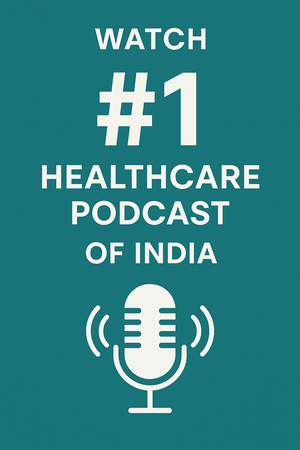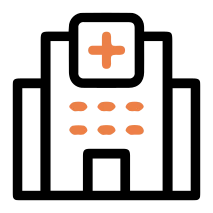Tuberculosis in children remains a major global health concern, especially in developing countries. It is a chronic infectious disease caused by the bacterium Mycobacterium tuberculosis, primarily affecting the lungs but potentially involving other organs. Though tuberculosis (TB) is often associated with adults, children are particularly vulnerable due to their immature immune systems.
TB can be silent in its early stages, but if left untreated, it can cause severe illness, long-term complications, and even death. Despite medical advancements, childhood tuberculosis often goes undiagnosed or misdiagnosed, as its symptoms may mimic other childhood illnesses. Understanding the causes, signs, and treatment of pediatric tuberculosis is crucial for timely intervention and prevention of complications.
This article aims to explain everything about TB in children in a simple, parent-friendly format, while incorporating key SEO terms like “symptoms of TB in children,” “pediatric tuberculosis diagnosis,” and “tuberculosis treatment in children.”
What is Tuberculosis in Children?
Tuberculosis (TB) is a bacterial infection that most often affects the lungs (pulmonary TB), but it can also infect other parts of the body such as the brain, spine, kidneys, and lymph nodes (extrapulmonary TB). In children, TB may be primary (new infection) or progressive (when the primary infection spreads or reactivates).
Children may acquire TB after inhaling bacteria released by an infected adult through coughing or sneezing. However, not all infected children develop active disease. Some may develop latent TB, meaning they carry the bacteria without symptoms. This form can remain dormant and later reactivate, especially if the child’s immunity weakens.
Causes of Tuberculosis in Children
How Children Contract TB
The primary cause of pediatric TB is inhalation of airborne droplets containing Mycobacterium tuberculosis. These droplets are released when someone with active TB coughs, sneezes, or talks. Children are especially vulnerable if they:
- Live in close contact with an infected adult
- Reside in overcrowded or poorly ventilated settings
- Have compromised immunity (due to malnutrition, HIV, etc.)
- Are under five years of age
TB in children is rarely transmitted from child to child. Instead, it almost always comes from a nearby adult with undiagnosed or untreated active TB.
Risk Factors
Children are more likely to develop active TB disease if they:
- Are malnourished
- Have HIV or other immune-compromising illnesses
- Have not received the BCG vaccine
- Live in TB-endemic regions
- Have close household contacts with TB
Knowing these risk factors can prompt early screening and preventive therapy.
Symptoms of Tuberculosis in Children
General Symptoms
Tuberculosis symptoms in children can be subtle and develop slowly over weeks to months. The most common signs include:
- Persistent cough lasting more than two weeks
- Fever, especially low-grade and recurring in the evenings
- Night sweats
- Unexplained weight loss or poor weight gain
- Fatigue or irritability
- Loss of appetite
- Enlarged lymph nodes, especially in the neck
These symptoms can be easily mistaken for other illnesses, making clinical suspicion critical, especially in high-risk populations.
Organ-Specific Symptoms
If TB spreads beyond the lungs, symptoms vary by the organ affected:
- TB meningitis: Headache, vomiting, neck stiffness, seizures
- Spinal TB (Pott’s disease): Back pain, spinal deformity
- Abdominal TB: Pain, distension, diarrhea
- Lymph node TB: Swollen, sometimes pus-draining lymph nodes
Understanding the different manifestations helps in accurate diagnosis and treatment planning.
Diagnosis of Tuberculosis in Children
Challenges in Pediatric TB Diagnosis
Diagnosing TB in children is more difficult than in adults. Children often cannot produce sputum, and their symptoms may be non-specific. Thus, diagnosis relies on a combination of clinical, radiological, and laboratory findings.
Diagnostic Tools
- Chest X-ray: Can reveal classic TB patterns like consolidation or lymph node enlargement
- Tuberculin Skin Test (Mantoux test): Measures immune response to TB protein
- Interferon Gamma Release Assays (IGRAs): Blood test used mostly in older children
- Sputum or gastric aspirate for AFB testing: To detect the presence of TB bacteria
- GeneXpert (CBNAAT): Detects bacterial DNA and resistance to rifampicin
- Biopsy or FNAC: For lymph node TB or extrapulmonary involvement
Early diagnosis improves treatment outcomes and prevents complications.
Treatment of Tuberculosis in Children
Anti-Tubercular Therapy (ATT)
Treatment of TB in children involves a multi-drug regimen known as Anti-Tubercular Therapy (ATT), usually given over 6 months or longer. The first 2 months (intensive phase) typically include:
- Isoniazid (H)
- Rifampicin (R)
- Pyrazinamide (Z)
- Ethambutol (E)
This is followed by a continuation phase of Isoniazid and Rifampicin for 4 months. In more severe or drug-resistant TB, treatment duration may extend up to 12–24 months.
Supportive Care
In addition to medication, children may require:
- Nutritional rehabilitation
- Vitamin B6 supplementation (especially with Isoniazid)
- Corticosteroids in TB meningitis, pericarditis, or severe lymph node TB
- Directly Observed Therapy (DOTS) to ensure adherence
Proper adherence to treatment is critical to prevent relapse or drug resistance.
Prevention of Tuberculosis in Children
BCG Vaccination
The BCG vaccine (Bacillus Calmette-Guérin) is administered at birth in many countries and offers partial protection against severe forms of TB, like meningitis and miliary TB. While it doesn’t always prevent pulmonary TB, it reduces disease severity.
Additional Preventive Measures
- Screen and treat TB in close contacts
- Improve ventilation in homes and schools
- Educate families about early signs and hygiene
- Provide isoniazid preventive therapy (IPT) to high-risk children
Community-level awareness and early intervention can reduce transmission and disease burden.
Table: Pulmonary vs Extrapulmonary Tuberculosis in Children
| Aspect | Pulmonary TB | Extrapulmonary TB |
|---|---|---|
| Primary site | Lungs | Other organs (brain, spine, abdomen, lymph nodes) |
| Symptoms | Cough, chest pain, breathlessness | Organ-specific: headache, back pain, abdominal swelling |
| Contagious | Yes | No |
| Diagnosis | Chest X-ray, sputum, GeneXpert | Biopsy, imaging, CSF or ascitic fluid analysis |
| Treatment duration | Usually 6 months | May require 9–12 months |
Frequently Asked Questions (FAQs)
How does a child get tuberculosis, and is it contagious to others?
Children usually acquire tuberculosis by breathing in bacteria released from an adult who has active pulmonary TB. These bacteria are airborne and are spread through coughing, sneezing, or even speaking. If a child lives in close contact with someone who has untreated TB—especially in a crowded home—they’re at higher risk. Though TB is contagious, children with TB rarely transmit it to others, especially if they have extrapulmonary TB or a non-coughing presentation. However, they can get infected quickly from adults in their household or community.
What are the earliest signs of tuberculosis in a child?
The earliest signs can be very non-specific and easy to overlook. A persistent cough lasting more than two weeks, low-grade fevers that spike in the evenings, weight loss or poor weight gain, irritability, and night sweats are some key red flags. Enlarged lymph nodes, especially in the neck or underarms, are also common. Many of these signs mimic viral infections or other common illnesses, which is why a detailed family history and close observation are essential, especially if the child has been around someone with TB.
Can TB in children be completely cured?
Yes, TB in children is completely curable when diagnosed early and treated properly. The standard anti-TB treatment, when taken as prescribed for the full duration, usually leads to full recovery. The biggest challenge is adherence—since treatment lasts for months, some families stop medications early when symptoms improve. This can lead to relapse or drug-resistant TB. With proper supervision, nutritional support, and follow-up, most children recover fully and go on to lead healthy lives.
What is the difference between latent TB and active TB in children?
Latent TB means the child has been infected with the TB bacteria, but their immune system is keeping it in check. They have no symptoms and are not contagious. It can remain dormant for years. Active TB, on the other hand, means the bacteria have multiplied and are causing illness. This form presents with symptoms like fever, cough, and weight loss. Children with active TB require immediate treatment, while those with latent TB may be given preventive therapy to stop it from becoming active later.
How is TB diagnosed in children if they can’t produce sputum?
Since young children often cannot cough up sputum, doctors use alternative methods like gastric aspirates, induced sputum, or nasopharyngeal aspirates to collect samples. Imaging like chest X-rays and molecular tests like GeneXpert help confirm the diagnosis. Clinical judgment, contact history, and symptoms play a big role in deciding whether to start treatment. Pediatric TB diagnosis requires a multifaceted approach, especially in cases where lab confirmation is difficult.
Is the BCG vaccine effective in preventing TB in children?
The BCG vaccine, given at birth in many countries, helps protect against severe forms of TB like meningitis and miliary TB. However, it doesn’t always prevent pulmonary TB, especially in older children or adolescents. Still, BCG is crucial in reducing the severity of infection, and studies show vaccinated children fare better if they contract TB. It’s not a foolproof shield, but it offers important protection, especially in TB-endemic regions.
Are there any side effects of anti-TB treatment in children?
Most children tolerate anti-TB medications well. However, some side effects can include nausea, vomiting, joint pain, mild liver irritation, or rash. These are usually manageable. Regular monitoring through blood tests helps ensure that the liver and other organs are functioning well. Vitamin B6 is often given to prevent neuropathy caused by isoniazid. Severe side effects are rare, but any unusual symptom should be reported to the doctor immediately.
Can TB recur in children after treatment?
Yes, TB can recur if the treatment was not completed or if the child is re-exposed to the bacteria. This is called relapse TB. Also, if drug-resistant TB develops due to poor compliance or improper medication, it becomes harder to treat and more likely to come back. That’s why completing the full course of treatment—even when the child feels better—is essential. Recurrent TB can be prevented with strict adherence to medications and monitoring by a healthcare provider.
How does nutrition impact tuberculosis in children?
Nutrition plays a critical role in the development and recovery from TB. Malnourished children have weakened immune systems and are more likely to develop active TB if exposed. During treatment, undernourished children may take longer to recover and are at higher risk of complications. Providing protein-rich foods, iron, vitamins, and minerals helps build resistance, improve medication absorption, and support overall healing. Nutritional rehabilitation is now a standard part of TB care in children.
Is hospitalization always required for children with TB?
No, most children with TB can be treated at home with regular follow-up. Hospitalization is only required if the child is severely ill, unable to take medications, has TB meningitis or spinal TB, or requires further diagnostic tests. The goal is to keep children in familiar surroundings while ensuring adherence through programs like Directly Observed Treatment, Short-course (DOTS). Involving parents and educating families significantly boosts success rates.
Research References on Tuberculosis in Children
| Title of Study | Author Name |
|---|---|
| Pediatric Tuberculosis: Clinical Overview and Management | Dr. Neha Gupta |
| Childhood TB in Developing Countries | Dr. Prakash Mehra |
| BCG Vaccine: Protection and Limitations | Dr. Ramesh Chatterjee |
| Diagnosing TB in Children Without Sputum | Dr. Sunita Sharma |
| Treatment Protocols for Pediatric TB | Dr. Alok Jain |
| Nutritional Rehabilitation in Tuberculosis Management | Dr. Anuradha Kapoor |
| Drug-Resistant TB in Children: Challenges and Solutions | Dr. S.K. Rajan |
| Role of GeneXpert in Pediatric TB Diagnosis | Dr. Kavita Menon |
| TB and HIV Co-Infection in Children | Dr. Meenal Desai |
| TB Preventive Therapy in Pediatric Contacts | Dr. Vishal Bhatia |






 and then
and then